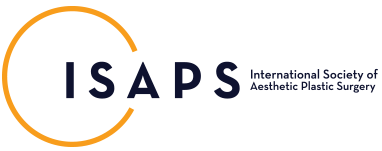Mastopexy
A breast uplifting procedure is performed to lift up breasts that have started to droop. The procedure is often combined with a minor breast reduction or a breast augmentation but can be done without changing the size of the breasts. The procedure takes around two hours and involves a hospital stay of around one day. Most women who undergo the procedure are delighted with their results, though there is a recovery time of a few weeks associated with the procedure. For more information on breast uplifting surgery please visit
Scars
To do a mastopexy, scars must be made around the breast. There are several techniques that can be used, but the two most popular are the anchor shape and the lollipop shape. The traditional way to perform a breast reduction leads to scars around the nipple/areolar, down from this to where the breast meets the chest wall and then across from near the armpit to near the most middle part of the breast. This is called the Wise pattern, or anchor scar technique. The lollipop scar technique is also called the vertical scar technique (or short scar technique) and this involves a scar around the nipple/areolar and down from here to where the breast meets the chest wall. Both techniques have their advantages and disadvantages. The Wise pattern is often used in cases where a large amount of breast tissue is going to be removed; the vertical scar technique leads to a smaller and less noticeable scar, but the chances of revisional surgery to the scar are greater than with the Wise pattern technique.
If a mastopexy is being performed and an implant is being inserted at the same time to enlarge the breast, the incisions may be different depending on the amount of enlargement required, the amount of excess skin in the breast and the amount the nipple needs to be lifted.
Sizes before and after
After the operation, bruising and swelling mean that we don't see the final result for around six months. It is important to wear a supportive sports bra constantly for a couple of months after the operation, so that the breasts heal in the right position and it is important to remember that changes in breast size may still occur after weight changes, even after the operation.
What you need to know about breast uplifting surgery
The risks of breast uplifting include (but are not limited to) the following:
- infections
- bleeding, bruising and blood clots
- abnormal scarring
- nerve damage leading to abnormal nipple sensation and abnormal sensation of the skin of the breast
- delayed wound healing, particularly where the nipple meets the vertical scar and where the vertical scar meets the chest wall
- over lifting of the nipple/ reduction or enlargement
- under lifting of the nipple/ reduction or enlargement
- asymmetry (everyone is asymmetric before the operation, and we always try and make both sides the same after the operation)
- changes in breast size and shape with weight gain, weight loss, pregnancy and breast feeding
- difficulty in breast feeding
- abnormal findings in the breast at the time of surgery or after examination at the laboratory
- difficulty in interpreting mammograms (although the risk of breast cancer is not raised by having a breast reduction, it may be harder to detect breast cancer if you have had a breast reduction and whenever you have a mammogram you should tell the radiographers you have had breast surgery before)
- changes with time (the effects of aging and gravity will continue once you have had a breast reduction)
- the risks of general anaesthesia (the procedure is performed under general anaesthetic)

